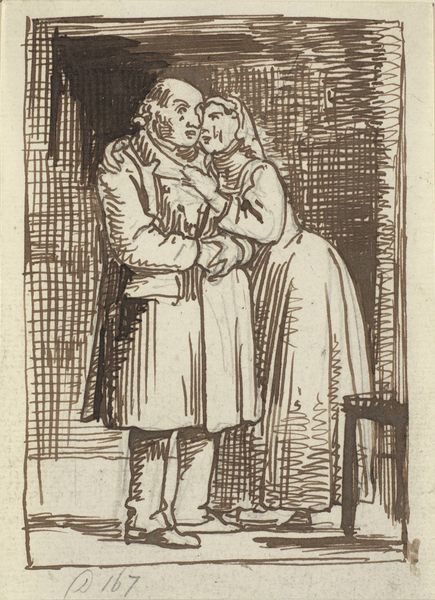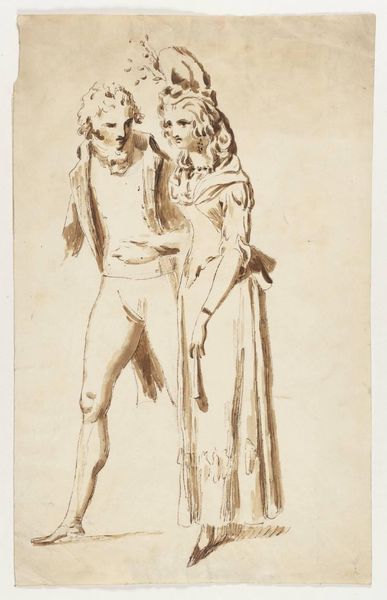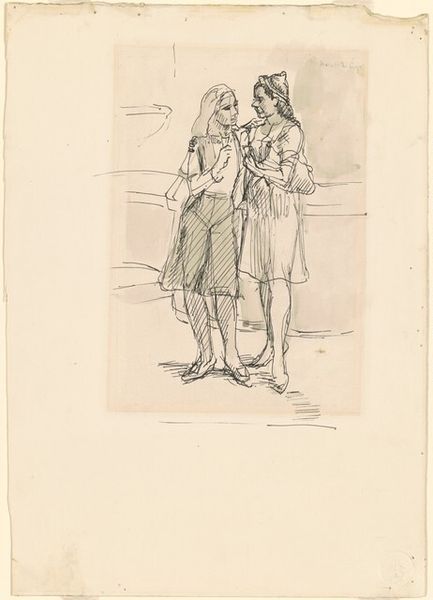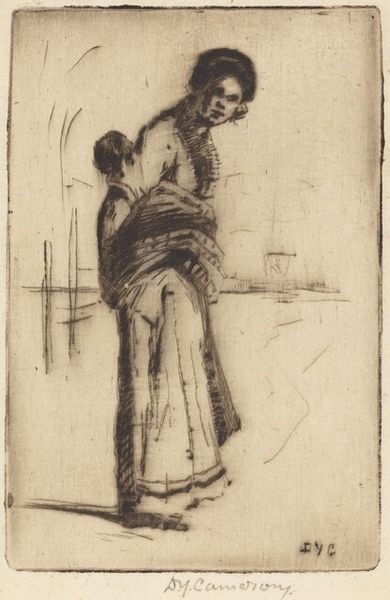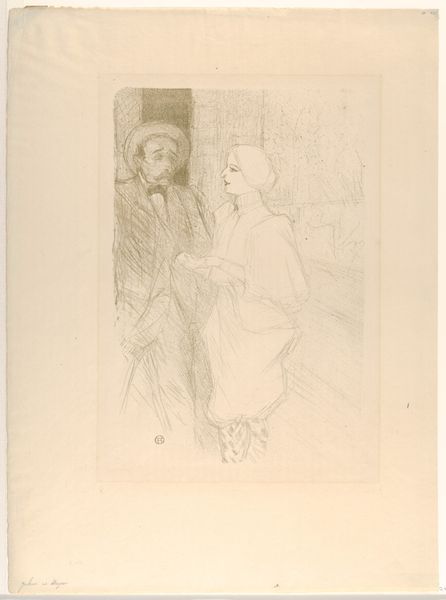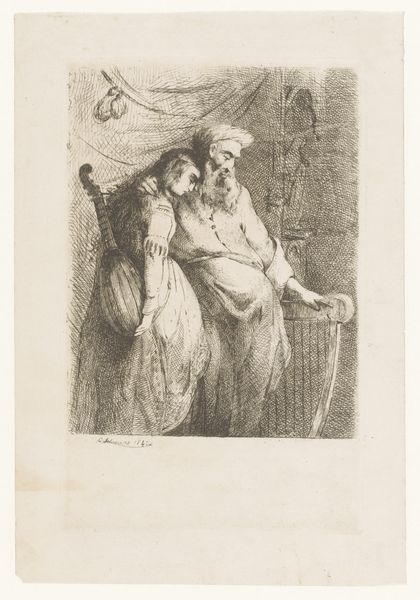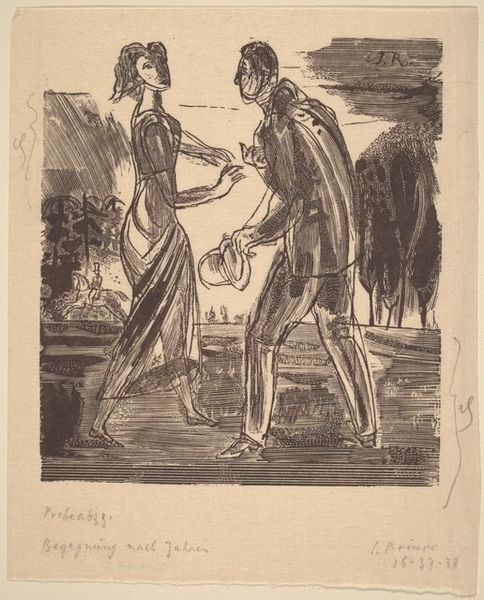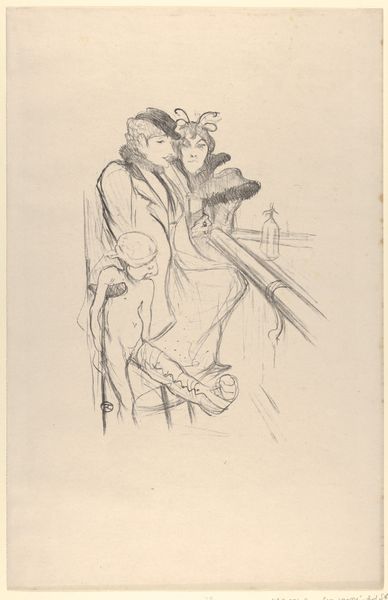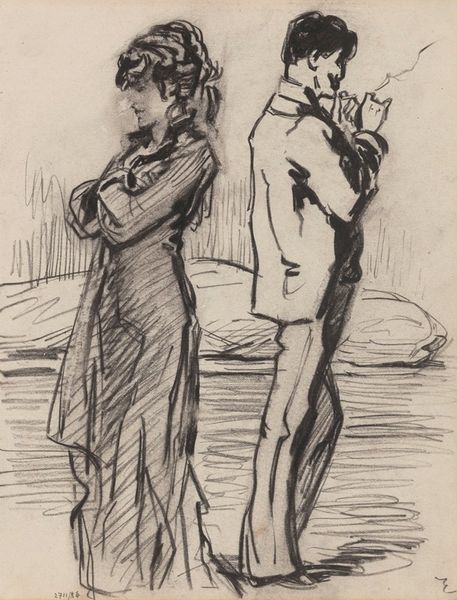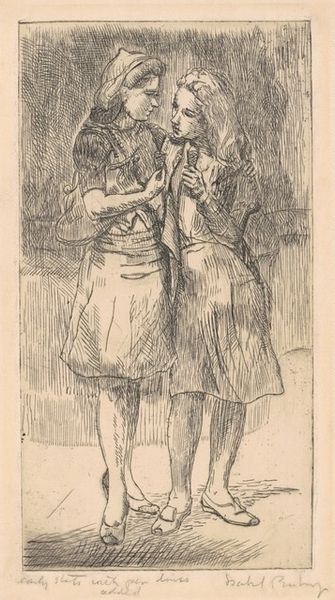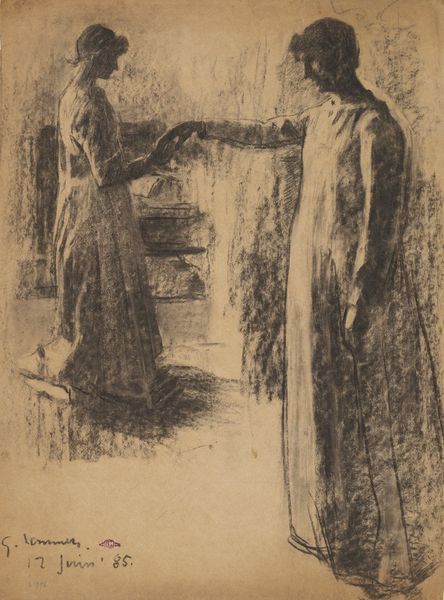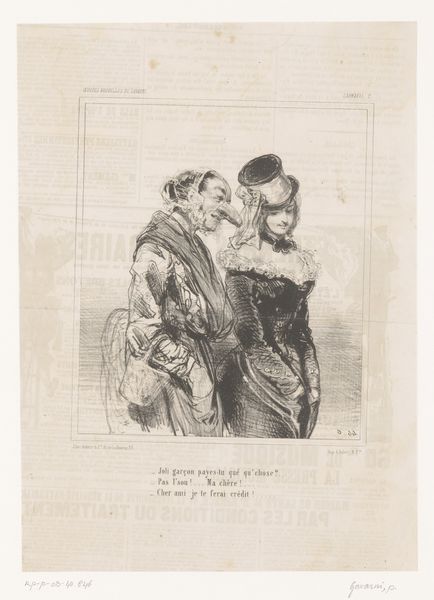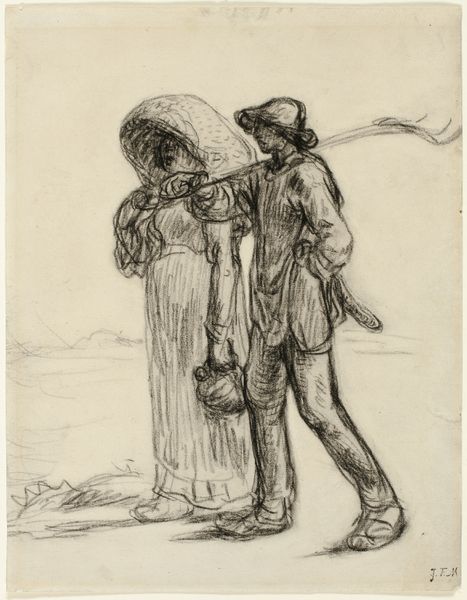
Dimensions: 121 mm (height) x 79 mm (width) (bladmaal)
William Holman Hunt made this pen and brown ink drawing, “The Beggar Maid,” which presents a crucial narrative moment. It explores themes of social class and unconventional love, prevalent in Victorian England. The drawing depicts King Cophetua choosing a beggar maid, Penelophon, as his wife, challenging the rigid social hierarchy of the time. Hunt uses visual codes to convey meaning, like the stark contrast between Cophetua's regal attire and Penelophon's simple dress, highlighting the transgression of social boundaries. The crown behind Penelophon's head may be intended as ironic commentary on the true source of royal authority: not lineage, but rather, personal virtue. Hunt was associated with the Pre-Raphaelite Brotherhood, which often critiqued contemporary society through historical or literary subjects, questioning the art establishment. The image reflects progressive ideals, imagining a world where love transcends social barriers. To fully understand "The Beggar Maid," a social historian would research Victorian social structures, class relations, and the Pre-Raphaelite movement. Considering such contextual factors, we can better appreciate the artist’s attempt to challenge societal norms through his art.
Comments
No comments
Be the first to comment and join the conversation on the ultimate creative platform.
